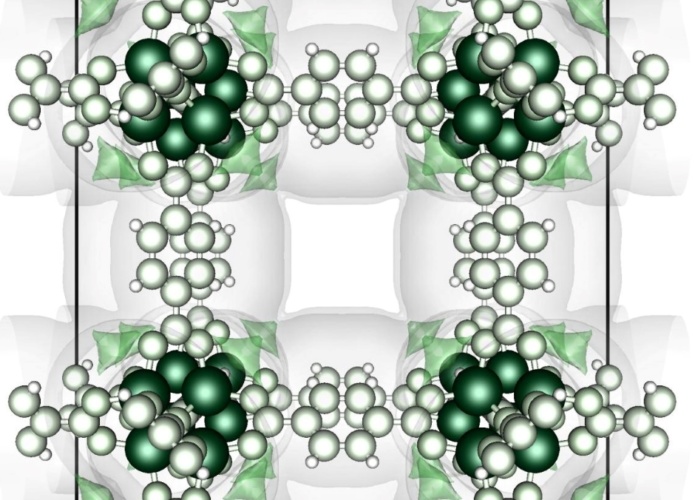
If brought to fruition, the research led by Cory Simon, assistant professor of chemical engineering in Oregon State University’s College of Engineering, could lead to electronic noses that also diagnose diseases and detect safety threats. Simon collaborated with chemical engineering professor Chih-Hung Chang on the research, which is published in ACS Applied Materials & Interfaces.
Smart fabric can detect and protect against toxic gases
RMIT technique makes MOFs in minutes
According to OSU, MOFs have nanosized pores and selectively adsorb gases. This is said to make them ideal for use in sensor arrays because of their tuneability, enabling engineers to use a range of materials that allows an array of MOF-based sensors to deliver detailed information.
Depending on which components make up a gas, different amounts of the gas will adsorb in each MOF, so the composition of a gas can be inferred by measuring the adsorbed gas in the array of MOFs using micro-scale balances. The challenge, however, is that all MOFs adsorb all gases.
"Curating MOFs for gas sensor arrays is not that simple because each MOF in the array will appreciably adsorb all three of those gases," Simon said in a statement.
Human noses overcome this by relying on about 400 different types of olfactory receptors, each of which is activated by many different odours, and each odour activates many different receptors. The brain analyses the response pattern, allowing people to distinguish a multitude of different odours.
"In our research, we created a mathematical framework that allows us, based on the adsorption properties of MOFs, to decide which combination of MOFs is optimal for a gas sensor array," Simon said. "There will inevitably be some small errors in the measurements of the mass of adsorbed gas, and those errors will corrupt the prediction of the gas composition based on the sensor array response. Our model assesses how well a given combination of MOFs will prevent those small errors from corrupting the estimate of the gas composition."
Though the research was primarily mathematical modelling, the scientists used experimental adsorption data in real MOFs as input, Simon said.
"We are currently seeking external funding together to bring this novel concept into physical realisation," Simon said. "Because of this paper, we now have a rational method to computationally design the sensory array, which encompasses simulating gas adsorption in the MOFs with molecular models and simulations to predict their adsorption properties, then using our mathematical method to screen the various combinations of MOFs for the most accurate sensor array."










McMurtry Spéirling defies gravity using fan downforce
What a fun demonstration. I wonder if they were brave enough to be in the car when it was first turned over. Racing fan cars would be an interesting...